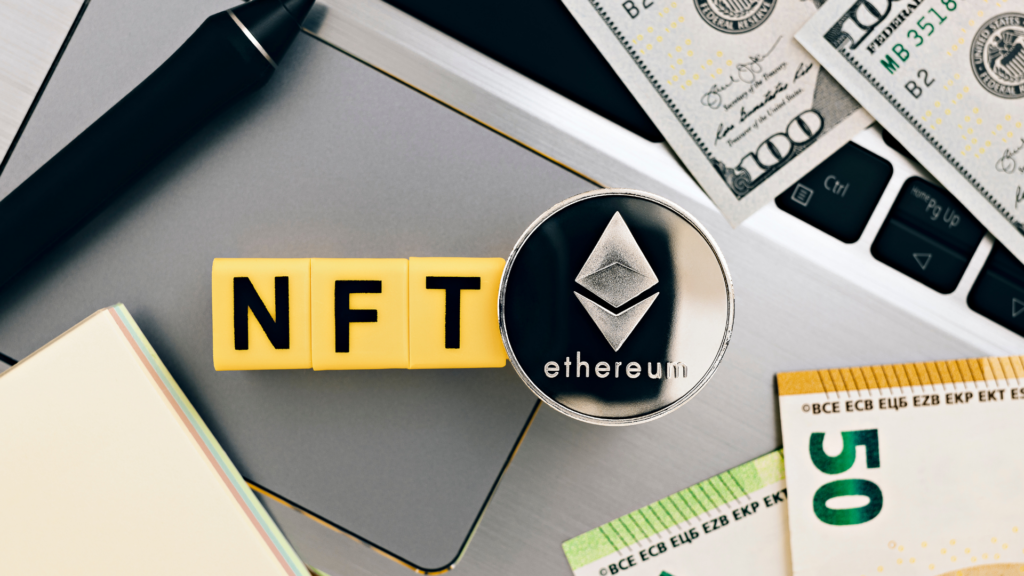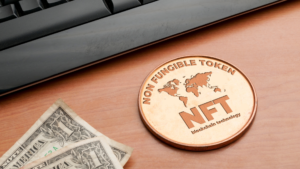
By David Drake
The art and financial sector has been abuzz for the past months: the rise of NFTs or non-fungible tokens has been garnering attention and quite the sum. Some of you may have heard of NFTs and how some of these assets are worth millions of dollars. Recently, the hype with NFTs came to an all-time high as famous artists, content creators, investors, and celebrities are getting involved in the space.
But what are NFTs for? How do NFTs work?
In layman’s terms, NFT stands for non-fungible tokens. Non-fungible asset is a unique item that is not interchangeable with any monetary value or other goods of the same kind or value. NFT is the token that represents the non-fungible digital asset that sits on blockchain technology. People can check, buy, and sell NFTs in some of today’s most common marketplaces like Rarible, Foundation, OpenSea, Nifty Gateway, and KnownOrigin.
NFTs have been around for some time and are mostly used by digital artists in selling their works online. For fans of digital art, you may have recognized famous artists that have tokenized some of their works and sold it as NFTs. One of the most popular, if not the most popular, NFTs sold belong to Beeple. Mike Winkelmann, also known as Beeple, is a digital artist that made a record sale of his artworks as NFTs at Christie’s auction house for $69 million. In recent months, Twitter’s CEO Jack Dorsey sold his first tweet as NFT for $2.9 million and recording artist Grimes sold a series of her digital artworks as NFTs worth almost $6 million. Buying NFTs can also be a new way for fans to start on their new art collection or any digital collectibles.
:format(webp)/cdn.vox-cdn.com/uploads/chorus_image/image/68948366/2021_NYR_20447_0001_001_beeple_everydays_the_first_5000_days034733_.0.jpg)
Image: Beeple
For blockchain and cryptocurrency enthusiasts, NFTs utilize the digital ledger technology. NFTs are not exclusive to digital art, but digital goods like songs, videos, gifs, trading cards, animation, tickets, domain names, virtual real estate, and more can be tokenized and turned into an NFT that is recorded on blockchain. Every NFT represents a unique and rare asset. However, buyers of the token do not directly own the original version of the digital goods – the creator of the work retains the original ownership observing copyright and royalties. The buyers of NFTs gain a “proof of ownership” that can be tracked and verified through its blockchain data.

The rise of NFTs in the financial sector
A Forbes article reported that the NFT market cap grew by 1,785% due to the demand surge for NFTs this 2021. The emerging NFT collectibles market has now entered mainstream global media with popular celebrities, athletes, and brands creating tokens and selling them on NFT marketplaces ranging from hundreds to millions of dollars. Some of today’s most common marketplaces for NFTs are Rarible, Foundation, OpenSea, Nifty Gateway, and KnownOrigin.
It’s important to note that this upward trend came as the world is facing the COVID-19 pandemic. Aside from the rise of NFTs, 2021 has been an eventful year for the blockchain and cryptocurrencies sector. A TechCrunch report said that NFTs, along with other tokens like utility and security tokens, and the token economies are part of an emerging development in the world’s financial capital sector in the last decade.
The volume of NFTs created and sold in the market grows as more industries are diving into the space. Ethereum blockchain powers and supports NFTs. Most NFTs operate on the Ethereum blockchain but there are other platforms like TRON that launched its first NFT standard protocol TRC-721. According to CoinDesk, the price of Ether peaked over $2,000 in the past week compared to the start of January 2021 when it’s valued at more than $1,200 and has a market cap value of over $225 billion. Aside from Ether, Bitcoin’s performance this week reached more than $59,000 with a market cap growth reaching $1.05 trillion.
These are big money moves in the financial capital market. Take note: NFTs represent a unique asset that is secured on a digital ledger. Non-fungible tokens capitalize on the scarcity and the rarity of the good or the asset – to put it simply, rare is best. But the question remains: with the market supply and demand, how will NFT retain its value over time and generate ample public interest and revenue? A recent Forbes article noted that while the market is booming, the criticisms on NFTs remain for being “highly illiquid” assets.
Despite all the criticisms, investments and VC funding are flowing into the space and NFT-based startups are beginning to increase. Dapper Labs, developer of NBA Top Shot, reportedly raised $305 million in its recent round of private funding led by Coatue Management. Billionaire Mark Cuban owns a “Maxi Kleber dunk moment” virtual card. In an interview with CNBC, Cuban said that blockchain tech is here to stay and predicts that NFTs will disrupt industries. “As more entrants come into the NFT market, it will become more efficient and the pricing will settle down,” Cuban said.
What’s next for NFTs?
There are still uncertainties regarding NFTs. Other people may see it as a passing trend where the hype is only short-lived and brands are jumping on the bandwagon in order to generate buzz and pull their prices up. There are concerns about the carbon footprint produced by NFT transactions and its long-term harmful effects in the environment.
From the creative perspective, NFTs help give artists and creators the chance to sell their work, retain ownership control, and earn royalties through the resale of their work directly on the global market. The digital non-fungible assets are as valuable, if not more, than the physical goods and the trading platforms and marketplaces makes it easier for people to browse through NFT collections and works.
TRON Foundation and BitTorrent’s CEO Justin Sun owns NFT assets, including Beeple’s “Ocean Front” artwork, and strongly suggests that NFT trading platforms should have anti-money laundering regulations to ensure the safety of the platform. “The younger generation people are willing to make their own decisions on trading,” Sun said. “That’s why social media sentiment is extremely important for the future generations and for the future traders.”
More investors, companies, and even hedge fund managers are diving into the space. Dealing with hedge funds, asset bubbles, and NFTs come with risks and perks. The coming months will be very crucial for determining the future of the NFT market.
There is a major NFT hype bubble right now and the NFT market is growing despite facing an ongoing pandemic. However, experts have predicted that NFT prices will settle down and may take a dip soon. The recent report from Nonfungible.com stated that the average price of NFTs peaked at almost $4,000 in February and has since dipped to an average of $1,500 in March. The report explained that the trend is not an indication of a market crash but it shows a “stabilization on a high plateau following a speculative peak.”
Last month, another record sale of an NFT art was reached at the recent Sotheby’s sale of “The Pixel,” a single pixel art by the digital artist Pak for almost $1.4 million in Ether. This art is only a part in the series of artworks by Pak sold in a three-day sale of the renowned auction house that reached almost $17 million. NFT creators and innovators are showing no signs of slowing down.
The best way to navigate the market is to know how NFTs work and the risks involved when dealing and navigating the market. This might only be the beginning of discovering the true potential of NFTs and what’s in store for the future of the global NFT market.

